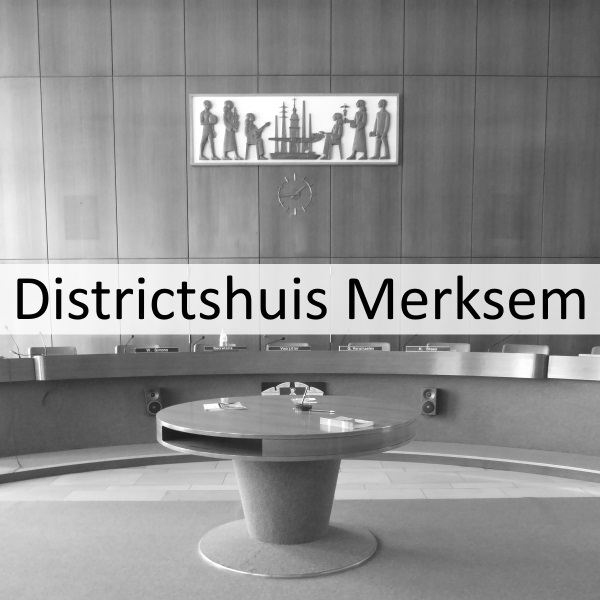
Baroque
You can’t get around it, it’s the baroque year in Antwerp. The tagline is “Rubens inspires”. So don’t expect real Rubens works in Antwerp (there are of course), but rather Rubens-inspired works by contemporary artists. Luc Tuymans has an exhibition at the M HKA and Jan Fabre has new work in the AMUZ. For the Rubens and Baroque lovers there is not a lot to do. There is the Michaelina exhibition in the MAS and the exhibition about book design at the Plantin-Moretus Museum. Baroque architecture is certainly not in the limelight this baroque year, except in my book about baroque of course and in this blog post!
Sint-Augustinuschurch – AMUZ
Kammenstraat 81, Antwerp
1615 – 1618
If you are going to see Jan Fabre’s works or see a performance, take a look around this former church. It is a design by Wenzel Coebergher, the baroque architect of these regions! Born in Antwerp and after having worked here for a long time as a painter, he leaves for Italy. Coebergher remained in Italy for twenty years, until he was recalled by the Archdukes to come and work for them as an architect engineer. Among other things, he designed the basilica of Scherpenheuvel. Coebergher was commissioned by the archdukes for this Augustinian church in the Kammenstraat. The façade is somewhat renaissance with red brick and natural stone bands, but the interior is completely baroque.
Sint-Ignatiuschurch – Sint-Carolus Borromeuschurch
Hendrik Conscienceplein 12, Antwerp
1615 – 1621
The pinnacle of baroque in Antwerp. If I do a guided tour in the historic center, I will definitely visit this church. The square in front and the interesting Heritage Library, everything takes you into the story of the Baroque. Architects were François d’Aguilon and Pieter Huyssens. d’Aguilon had written a book about optics and also used his knowledge about light in this church. Both architects had not seen the Italian Baroque in real life, but they had access to a large library and the knowledge of their friend Rubens. Coebergher probably also helped with some details …
Rubenshouse
Wapper 9 – 11, Antwerp
1610 – ca. 1615
From the Wapper you can only see the Renaissance house on the left and an Italian-looking palazzo on the right. Rubens bought the house on the left when he knew he would stay in Antwerp. In 1608, he was named court painter by the Archdukes and married Isabella Brant. What we see now is almost all reconstruction. What is still original are the portico and the garden pavilion. In my book I write five pages about this, so there is plenty to tell. The most fascinating thing is the mathematical relationship between the house, the portico and the garden pavilion. It’s a good example of proportions and dimensions.
Waterpoort
Gillisplaats, Antwerp
1624
A forgotten thing … The gate in the middle of a roundabout on the South. Also called the walking gate, because she has moved so many times in her life. It is still not certain whether Rubens supplied the design for it, but his influence is recognisable. The gate first stood at the Vlasmarkt on the edge of the Scheldt. The Scheldt side has a sculpture by Scaldis, the personification of the river with a cornucopia. The other side, or country side, contains the coat of arms of the Spanish monarch.
Spaanse poortjes
throughout the city
You’ve probably already seen them. Decorated frames on front doors or gates, while the rest of the facade has been kept sober. They are usually executed in a baroque style and are given the name “Spanish Gates”. Spanish because we had a Spanish monarch in the Baroque period. In my book there are some that are definitely worth a plan (only in Dutch).
Palaces of architect van Baurscheit
especially on and around the Meir, Antwerp
1737 – 1751
Have you ever looked above the shops on the Meir? There are real gems, such as Tilquin in art deco. But there is also rococo architecture. I know that it’s a discussion point whether rococo is part of baroque or a distinct style. I count it in the late baroque. Van Baurscheit was the rococo architect of Antwerp. Among other things, he has designed the Royal Palace and the Osterrieth House. It was 250 years ago since he died in September (2018). So keep an eye on the website and the mail because I want to do something with that date …
More baroque
Baroque palaces – walk along the baroque buildings of architect Van Baurscheit
Baroque year 2018 While writing my book about Baroque in Antwerp, I came across Van Baurscheit again. A versatile artist who largely determined the image of Antwerp in the early eighteenth century. I discovered that he died on the night of 9 to 10 September 1768. So...














